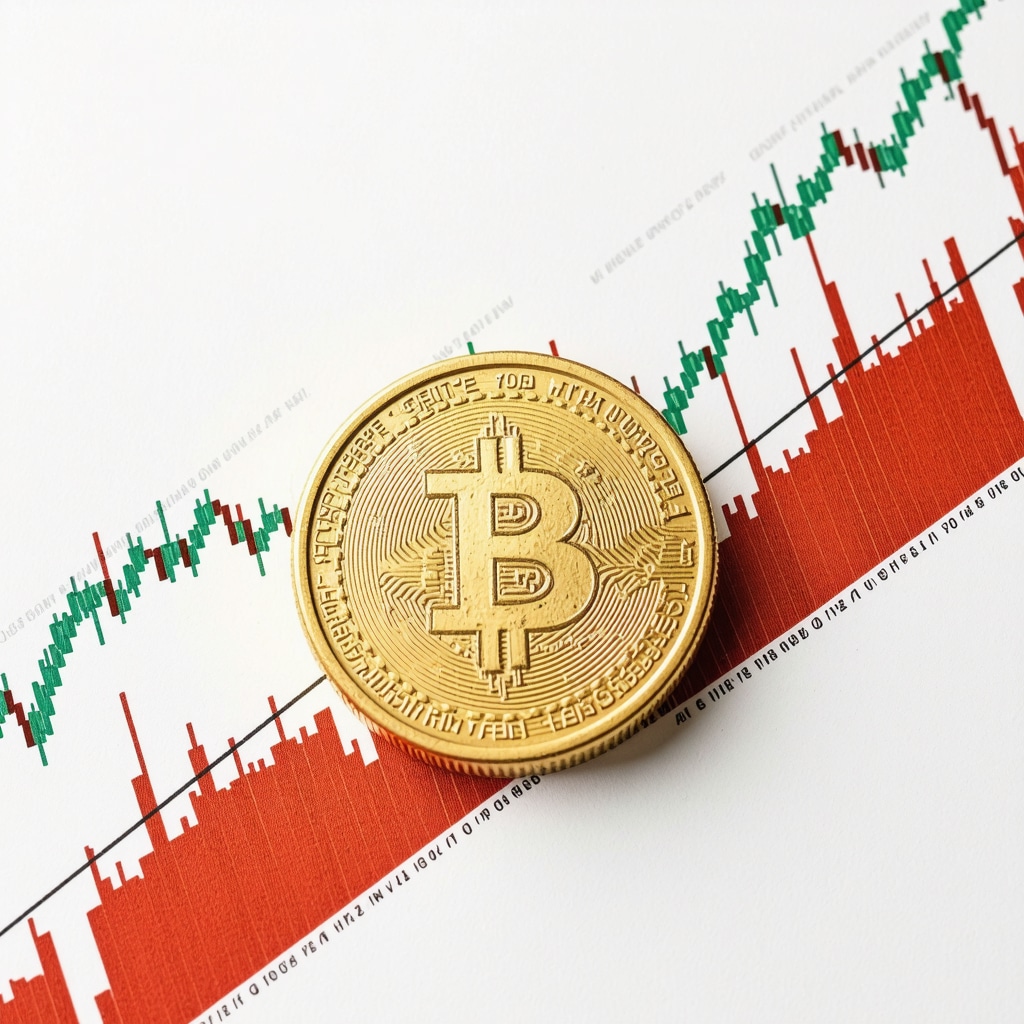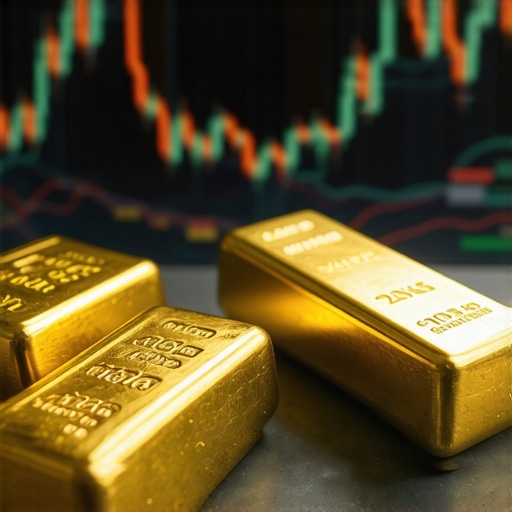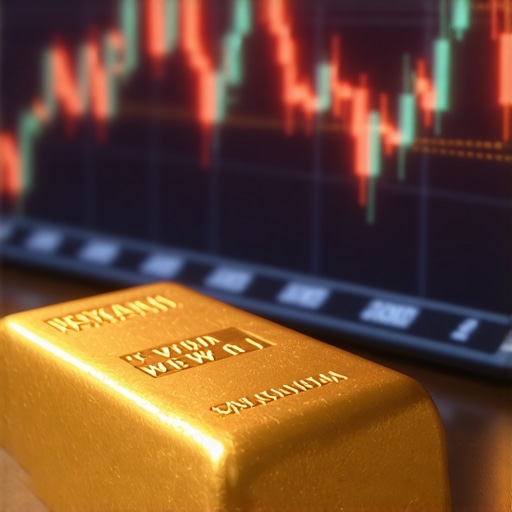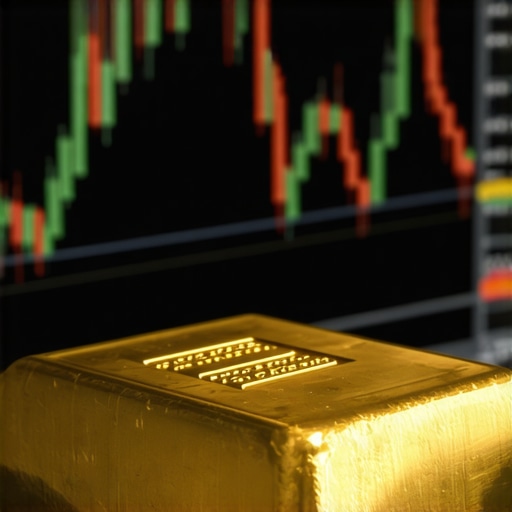Understanding the Intricate Link Between Inflation and Gold Prices in 2025
The relationship between inflation and gold prices remains a cornerstone of precious metals economics, especially as we approach 2025 amid shifting global monetary policies and fluctuating economic growth rates. Gold’s historical role as an inflation hedge is nuanced by evolving macroeconomic variables, such as central bank interventions, currency valuations, and supply-demand imbalances. Investors must dissect these layered factors to anticipate price trajectories accurately.
Macro-Financial Drivers Influencing Gold Price Movements Amid Inflationary Pressures
Gold price fluctuations in 2025 are not merely reactive to headline inflation figures but are profoundly influenced by real interest rates, inflation expectations, and geopolitical risk premiums. When inflation accelerates while real yields remain negative or low, gold typically gains appeal as a non-yielding asset that preserves purchasing power. However, the interplay of quantitative easing tapering, fiscal stimulus adjustments, and currency depreciation adds complexity to forecasting models, requiring a multidimensional analytical approach.
How Do Inflation Expectations and Central Bank Policies Intersect to Affect Gold’s Valuation?
Inflation expectations are a critical forward-looking gauge that affects gold demand. Central banks’ monetary tightening or easing strategies directly impact real yields and investor appetite for gold. For instance, in scenarios where inflation outpaces central bank targets but policy lags, gold often benefits from increased safe-haven demand. Conversely, aggressive rate hikes can dampen gold’s allure by raising opportunity costs. This dynamic calls for investors to monitor policy signals closely while contextualizing inflation data within broader economic frameworks.
Layered Implications of Supply Constraints and Inflation on Gold’s Market Dynamics
Supply-side factors, including mining production rates and geopolitical disruptions, compound inflationary pressures by constraining gold availability. As production costs rise with inflation, mining companies face elevated expenses, which can tighten supply and bolster gold prices. Coupled with sustained or rising demand from sectors such as jewelry and technology, inflation’s indirect effects on supply chains become pivotal in price forecasts.
Strategic Insights: Positioning Gold Investments to Navigate Inflation Risks in 2025
Given these complexities, sophisticated investors often diversify gold holdings across physical bullion, ETFs, and mining equities to optimize exposure and hedge against inflation volatility. Advanced gold trading techniques and portfolio balancing strategies, as detailed in smart gold investment strategies to hedge inflation risks in 2025, provide frameworks for maximizing returns while managing risk. Additionally, monitoring key economic indicators and geopolitical developments remains essential for timely adjustments.
Where Can Investors Access Comprehensive Analyses on Gold Price Trends and Inflation Impact?
For those seeking in-depth market insights, resources such as the gold price forecast 2025 market insights and expert predictions offer valuable, data-driven perspectives. Engaging with expert forums and contributing professional observations can further refine understanding and investment decisions.
To deepen your strategic approach and stay ahead in the evolving gold market landscape, explore our expert-level analyses and share your perspectives on inflation’s role in shaping gold prices today.
Authoritative analysis from the International Monetary Fund’s World Economic Outlook April 2023 underscores the critical influence of inflation and monetary policy on commodity prices, including gold, reinforcing the importance of a nuanced, data-centric approach to forecasting.
Integrating Gold Within Diversified Portfolios to Mitigate Inflationary Volatility
Amid the complex interplay of inflation and economic uncertainties in 2025, gold’s role transcends simple hedging; it becomes a strategic anchor within diversified investment portfolios. Investors increasingly recognize that combining physical gold, gold ETFs, and mining stocks can optimize risk-adjusted returns, leveraging each asset class’s unique attributes. Physical gold offers tangible inflation protection and liquidity, while ETFs provide cost-effective market exposure and ease of trading. Mining equities, conversely, introduce growth potential but with heightened market sensitivity. A balanced allocation calibrated to individual risk tolerance and market outlook enhances resilience against inflation shocks and geopolitical upheavals.
For a detailed exploration of such portfolio strategies, consult our guide on smart gold investment strategies balancing coins and ETFs, which elucidates frameworks for aligning gold holdings with broader financial goals.
Technological and Geopolitical Influences on Gold Demand in an Inflationary Environment
Beyond macroeconomic factors, technological advancements and geopolitical tensions are pivotal in shaping gold’s demand dynamics in 2025. Innovations in electronics and medical devices sustain robust industrial demand, while escalating geopolitical risks amplify the metal’s safe-haven appeal. Inflation exacerbates supply-side challenges by inflating operational costs for miners, potentially constraining output and tightening market availability. This multifactorial environment demands investors remain vigilant, integrating geopolitical analysis with inflation forecasts to anticipate price inflections effectively.
What Advanced Analytical Tools Can Investors Use to Forecast Gold Price Movements Amid Inflation and Global Uncertainties?
Forecasting gold prices in 2025 requires sophisticated analytical frameworks that synthesize macroeconomic indicators, inflation trends, central bank policies, and geopolitical developments. Advanced tools such as econometric modeling, sentiment analysis derived from global news flows, and machine learning algorithms enable investors to capture complex nonlinear relationships affecting gold valuations. Moreover, real-time monitoring of supply chain disruptions and mining sector performance metrics enhances forecasting accuracy.
Resources like the gold price forecast 2025 key indicators every investor should watch provide expert-curated data points and trend analyses essential for deploying these advanced techniques.
Engage with our community by sharing your insights or questions on leveraging analytical tools for gold investment success in inflationary contexts. Your contributions enrich the collective expertise and support more informed decision-making.
According to the World Bank’s Commodities Market Outlook, 2024, the integration of real-time data analytics and geopolitical risk assessments is increasingly critical for anticipating commodity price movements, including gold, underscoring the evolving sophistication required in contemporary investment strategies.
Harnessing Quantitative Models to Decode Gold’s Inflationary Response
In 2025, the complexity of gold’s reaction to inflationary trends transcends traditional heuristics, compelling investors and analysts to adopt sophisticated quantitative models. These models integrate stochastic elements of inflation volatility, real interest rate fluctuations, and cross-asset correlations to produce probabilistic forecasts of gold price trajectories. For instance, regime-switching models allow market participants to identify structural breaks where inflation dynamics shift, impacting gold’s hedging efficacy. Such nuanced approaches not only capture nonlinear dependencies but also help isolate gold’s sensitivity amidst concurrent monetary tightening and external shocks.
Moreover, the incorporation of macro-financial stress indicators enhances model robustness. By embedding variables such as global liquidity measures and systemic risk proxies, analysts can anticipate periods when gold’s safe-haven demand intensifies due to inflationary uncertainty. This layered modeling framework advances beyond static correlations, enabling a dynamic understanding of gold’s evolving role in inflationary environments.
How Can Machine Learning Enhance Predictive Accuracy of Gold Prices in Inflationary Contexts?
Machine learning (ML) techniques offer a transformative edge in modeling gold price behavior against inflationary backdrops. By training on high-frequency economic data, sentiment indices, and geopolitical event streams, ML algorithms—such as random forests, gradient boosting, and deep neural networks—uncover hidden patterns and interaction effects that traditional econometric models might overlook. These tools can adapt to regime shifts and nonlinearities inherent in commodity markets, delivering real-time predictive insights.
However, the efficacy of ML depends critically on feature engineering and data quality. Integrating domain expertise to select relevant inflation proxies and macroeconomic indicators is paramount. Additionally, explainability frameworks within ML facilitate transparency and trust, allowing investors to comprehend drivers behind model outputs and calibrate strategies accordingly. As demonstrated by recent research published in the Journal of Commodity Markets, ML-enhanced forecasting yields statistically significant improvements in anticipating gold price movements during inflation surges.
Inflation-Driven Shifts in Investor Behavior and Portfolio Rebalancing Dynamics
Inflation does not merely influence gold prices through fundamental valuation channels; it also reshapes investor psychology and portfolio management paradigms. Rising inflation often triggers a risk-on/risk-off dichotomy where gold’s dual identity as a commodity and financial asset comes into sharp focus. Sophisticated investors may recalibrate exposure dynamically, balancing gold’s inflation hedge attributes against opportunity costs in equities and fixed income.
Behavioral finance insights reveal that inflation uncertainty elevates preference for assets with intrinsic value and low correlations to traditional financial instruments—qualities embodied by physical gold and select mining equities. Consequently, portfolio managers increasingly employ tactical asset allocation strategies that incorporate inflation-linked derivatives and gold-related structured products to fine-tune risk-return profiles.
What Are the Emerging Trends in Gold-Linked Financial Instruments Tailored for Inflation Hedging?
The evolving macroeconomic landscape has spurred innovation in gold-linked financial products designed to optimize inflation protection. Instruments such as inflation-indexed gold bonds, gold-backed ETFs with embedded options strategies, and mining company royalty trusts provide diversified avenues for exposure. These products offer enhanced liquidity, tax efficiency, and tailored risk exposures aligned with inflation trajectories.
For instance, inflation-indexed gold bonds combine sovereign creditworthiness with gold price linkage, creating hybrid assets that appeal to risk-conscious investors seeking inflation-adjusted returns. Meanwhile, ETFs that integrate dynamic rebalancing algorithms can adapt holdings in response to shifting inflation expectations and market volatility. Mining royalty trusts, by focusing on cash flow streams rather than direct equity ownership, afford exposure to production upside while mitigating operational risks exacerbated by inflationary cost pressures.
Investors interested in comprehending these sophisticated instruments can refer to detailed analyses provided by industry leaders such as S&P Global Market Intelligence, which elucidate structural features and market implications.
Intersecting Geopolitical Risk and Inflation: Implications for Gold Supply Chains and Market Liquidity
The nexus of geopolitical tensions and inflationary pressures uniquely challenges gold markets by disrupting supply chains and influencing liquidity conditions. Inflation amplifies operational costs, from labor to energy, intensifying vulnerabilities in politically sensitive mining regions. Concurrent geopolitical conflicts can precipitate abrupt export restrictions, mine closures, or sanctions, thereby constricting physical gold availability.
Market liquidity also faces strain under such compounded risks. Inflation-driven uncertainty may prompt central banks and institutional investors to adjust gold reserve policies, influencing market depth and bid-ask spreads. Additionally, speculative flows often surge amid geopolitical flare-ups, introducing volatility that complicates pricing efficiency.
These dynamics necessitate comprehensive risk assessments that integrate geopolitical scenario analysis with inflation forecasts to anticipate supply disruptions and market liquidity shifts accurately.
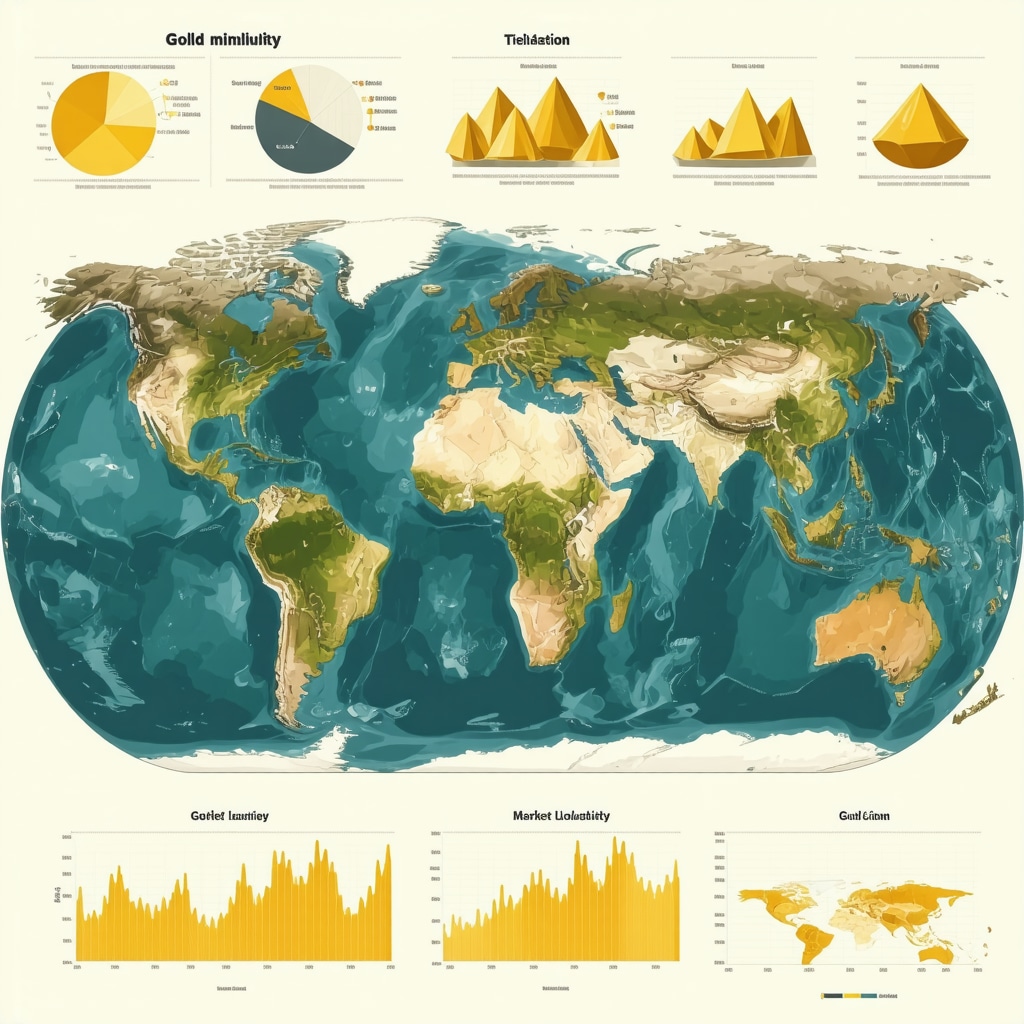
What Are the Best Practices for Incorporating Geopolitical and Inflation Risks into Gold Investment Strategies?
Integrating geopolitical and inflation risks into gold investment demands a multidisciplinary approach combining data analytics, expert geopolitical intelligence, and adaptive portfolio construction. Best practices involve continuous monitoring of geopolitical hotspots, macroeconomic indicators, and mining sector developments. Scenario planning tools enable investors to simulate potential supply shocks and their price impacts, facilitating proactive risk mitigation.
Moreover, diversifying gold exposure across jurisdictions and asset types reduces concentration risk. Tactical use of derivatives can hedge against short-term volatility induced by geopolitical crises, while strategic allocations preserve long-term inflation protection. Collaborating with geopolitical risk consultants and employing advanced analytics platforms enhances decision-making quality.
Engage with our expert community to explore cutting-edge methodologies for integrating these multifaceted risks into your gold investment framework, ensuring resilience amid the intertwined challenges of inflation and global instability.
Decoding Gold’s Inflation Sensitivity Through Dynamic Quantitative Models
In the evolving economic landscape of 2025, gold’s price response to inflation transcends simplistic linear models, necessitating deployment of advanced quantitative frameworks. Regime-switching and stochastic volatility models capture the nuanced inflation-gold nexus by identifying structural shifts in monetary policy regimes and inflationary environments that traditionally impact gold’s hedging effectiveness. These models integrate real interest rate variability, macro-financial stress factors, and cross-asset correlations to generate probabilistic forecasts that reflect the metal’s complex reaction to inflationary pressures and external shocks.
Machine Learning: Revolutionizing Predictive Analytics for Gold in a Complex Inflationary Context
Machine learning (ML) methodologies have emerged as transformative tools in forecasting gold prices amid the multifaceted inflationary and geopolitical backdrop. By harnessing high-frequency economic indicators, sentiment data from global news analytics, and macroeconomic variables, ML algorithms such as random forests, gradient boosting machines, and deep neural networks unravel intricate nonlinear relationships and regime-dependent behaviors. The synergy of domain expertise and sophisticated feature engineering enhances model interpretability and robustness, enabling real-time adaptive predictions that outperform traditional econometrics. Notably, recent studies in the Journal of Commodity Markets validate ML’s superior accuracy in capturing inflation-induced gold price dynamics.
How Can Investors Leverage Advanced Machine Learning Models to Anticipate Gold Price Fluctuations During Inflation Surges?
Investors seeking to harness ML for gold price forecasting should focus on integrating diverse data streams encompassing inflation expectations, central bank communications, geopolitical event indices, and mining sector performance metrics. Employing ensemble approaches mitigates model overfitting and enhances stability across market regimes. Additionally, coupling ML outputs with scenario analysis and stress testing provides actionable insights for portfolio adjustment. Practical implementation requires ongoing data quality assurance and interpretability frameworks to maintain confidence in algorithm-driven decisions.
Inflation-Linked Innovations in Gold Financial Instruments and Portfolio Optimization
The inflationary climate of 2025 drives innovation in gold-related financial products that offer tailored exposure and risk management capabilities. Instruments such as inflation-indexed gold bonds, dynamic rebalancing ETFs, and mining royalty trusts afford investors nuanced inflation hedging with enhanced liquidity and tax efficiency. These products facilitate tactical allocations responsive to shifting inflation trajectories and market volatility, enabling more precise risk-return calibration within diversified portfolios. For a comprehensive review of these cutting-edge instruments, consult S&P Global Market Intelligence.
Integrating Geopolitical Risk and Inflation Analytics for Robust Gold Investment Strategies
The confluence of geopolitical instability and inflationary pressures imposes multidimensional risks on gold supply chains and liquidity. Elevated operational costs coupled with geopolitical disruptions—such as sanctions and export restrictions—can constrict physical gold availability, precipitating market volatility. Advanced scenario planning and geopolitical risk analytics, combined with inflation trend monitoring, empower investors to anticipate supply shocks and liquidity fluctuations. Diversification across geographies and asset classes, alongside tactical use of derivatives, fortify portfolios against these compounded risks.
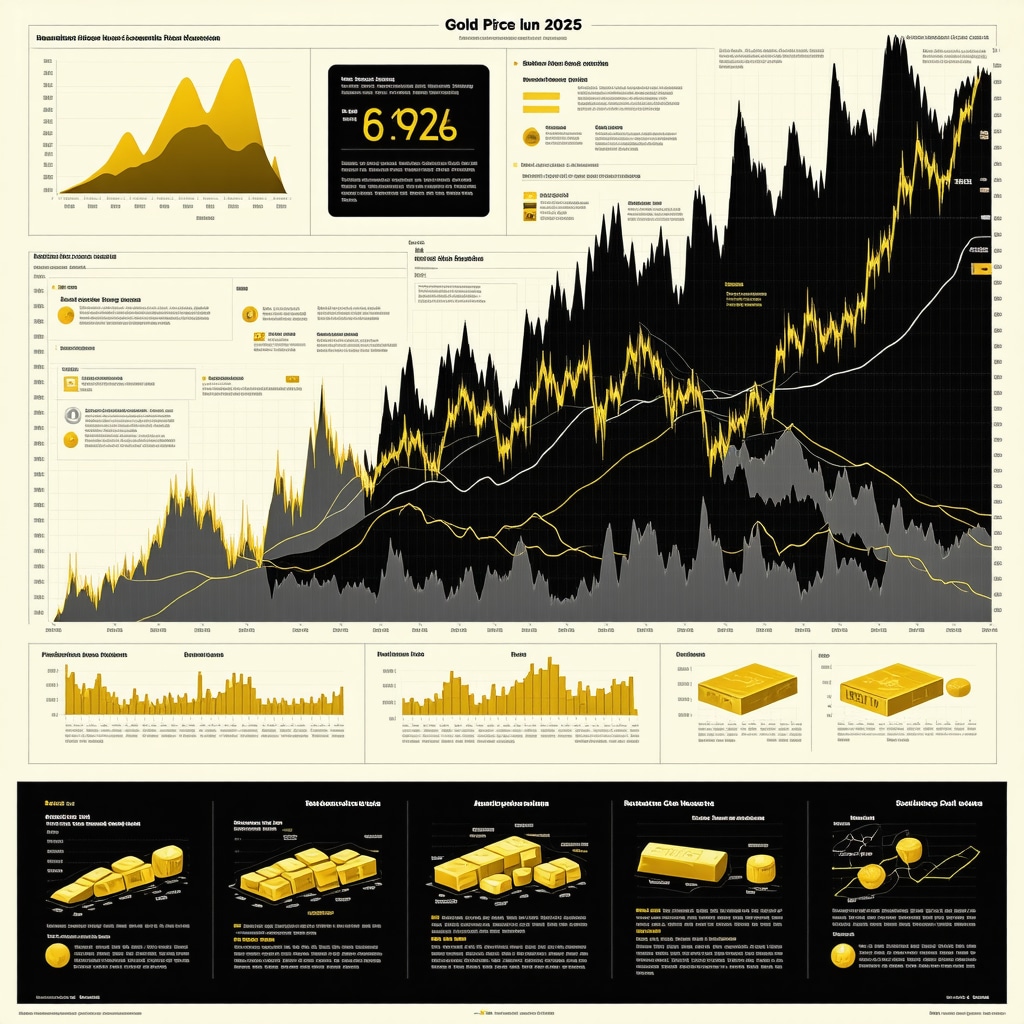
What Methodologies Best Support Incorporating Geopolitical and Inflation Risks into Gold Portfolio Construction?
Best practices emphasize multidisciplinary approaches incorporating continuous data-driven geopolitical intelligence, macroeconomic inflation indicators, and mining sector analytics. Employing scenario simulations and stress testing tools facilitates proactive risk mitigation. Tactical derivative strategies can hedge short-term volatility, while strategic reallocations preserve long-term inflation resilience. Collaboration with geopolitical experts and utilization of advanced analytics platforms improve adaptive decision-making in this complex environment.
For authoritative macroeconomic perspectives, the International Monetary Fund’s World Economic Outlook April 2023 offers critical insights on inflation and monetary policies shaping commodity markets, including gold.
Engage with our expert community to deepen your understanding and refine your gold investment strategies amid the intertwined challenges of inflation and geopolitical volatility.
Expert Insights & Advanced Considerations
Gold’s Inflation Hedge Is Context-Dependent and Dynamic
While gold traditionally serves as a hedge against inflation, its effectiveness in 2025 is shaped by the interplay of real interest rates, monetary policy shifts, and geopolitical tensions. Investors must evaluate gold’s inflation sensitivity within evolving macro-financial regimes rather than relying on static correlations.
Machine Learning and Quantitative Models Are Essential for Modern Forecasting
Incorporating machine learning algorithms and regime-switching quantitative models enables more accurate prediction of gold price trajectories amid inflationary volatility. These tools capture nonlinearities and structural breaks that conventional econometrics often miss, offering investors a competitive forecasting advantage.
Portfolio Diversification Across Gold Asset Classes Enhances Inflation Resilience
A balanced allocation combining physical bullion, ETFs, and mining equities optimizes exposure to gold’s inflation hedge characteristics while managing liquidity and growth considerations. Strategic rebalancing in response to inflation shifts strengthens portfolio robustness against market uncertainties.
Geopolitical Risk Integration Is Crucial for Supply Chain and Liquidity Assessments
Inflationary pressures amplify vulnerabilities in gold supply chains, especially in geopolitically sensitive regions. Incorporating geopolitical risk analytics alongside inflation forecasts allows for proactive mitigation of supply disruptions and liquidity constraints in gold investments.
Innovative Gold-Linked Financial Products Tailored for Inflation Hedging Are Emerging
New instruments such as inflation-indexed gold bonds and dynamic rebalancing ETFs offer sophisticated avenues to align gold exposure with inflation trajectories, providing investors with enhanced flexibility, tax efficiency, and risk management capabilities.
Curated Expert Resources
International Monetary Fund’s World Economic Outlook April 2023: Offers authoritative macroeconomic analysis on inflation and monetary policy impacts on commodities, including gold, essential for data-driven investment decisions.
Journal of Commodity Markets: Publishes cutting-edge research validating advanced forecasting techniques like machine learning for gold price dynamics amid inflation surges.
S&P Global Market Intelligence – Gold-Linked Products Innovations: Provides in-depth coverage on emerging gold financial instruments designed for inflation hedging and portfolio optimization.
World Bank Commodities Market Outlook 2024: Delivers comprehensive insights on real-time data analytics and geopolitical risk assessments critical for anticipating gold market movements.
BuyingGoldNow’s Gold Price Forecast 2025 – Key Indicators Every Investor Should Watch: Curates expert-curated data points and trend analyses invaluable for deploying advanced analytical frameworks effectively.
Final Expert Perspective
Understanding the nuanced relationship between inflation and gold prices in 2025 demands a sophisticated, multidimensional approach. Advanced quantitative models, machine learning, and integrated geopolitical-risk assessments collectively refine forecasting accuracy and investment strategy. Diversifying gold holdings across physical assets, ETFs, and mining equities further fortifies portfolios against inflationary and market volatility. Embracing innovative gold-linked financial products can provide tailored inflation protection and enhanced liquidity. For those aiming to deepen their strategic edge, exploring comprehensive resources such as the gold price forecast 2025 key indicators every investor should watch and engaging with expert communities is indispensable. We encourage you to contribute your insights and continue refining your gold investment strategies in this complex inflationary landscape to maintain resilience and capitalize on emerging opportunities.






